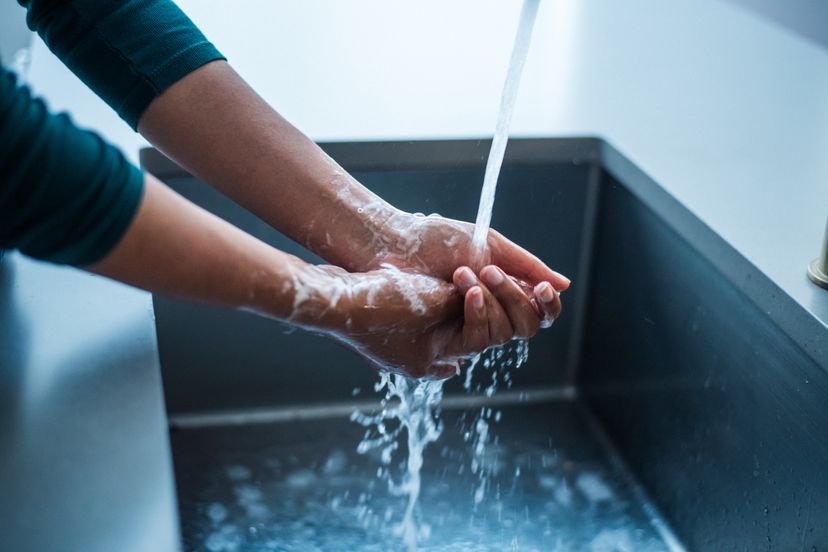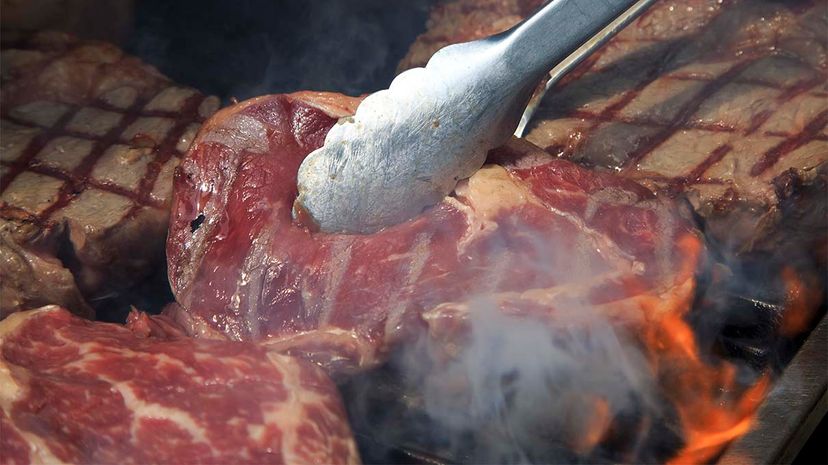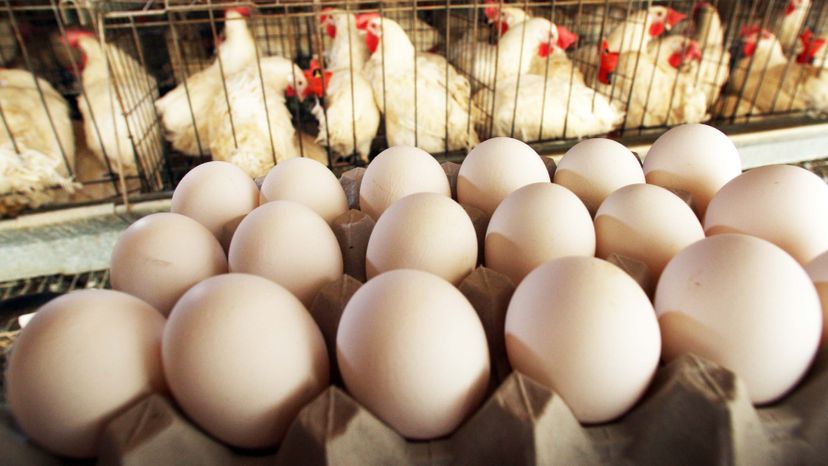
About This Quiz
"Are you a kitchen safety whiz or do you need to brush up on your food safety skills? Take the Food Safety Quiz by Teresa McGlothlin to put your knowledge to the test! From proper food storage of raw meat, hot foods or cold foods to hand washing techniques, this quiz covers all the essentials to keep you and your loved ones safe while cooking and eating.
Don't let your food safety knowledge go stale! Whether you're a cooking novice or a seasoned chef, there's always something new to learn about keeping your meals safe and delicious to prevent foodborne illness. Challenge yourself with this quiz and see how much of a food safety expert you truly are!
Join us as we explore the ins and outs of food safety in this interactive and informative quiz. Test your knowledge, learn something new, and discover just how well you understand the key principles of kitchen safety. So, are you ready to take the Food Safety Quiz and prove your culinary expertise? Let's get started!
"
According to the USDA, you should wash your hands with hot, soapy water for at least 20 seconds. It doesn't hurt to scrub longer, but you only need 20 seconds to rid yourself of a litany of bacteria.

The only way to make sure meats and poultry are cooked to the proper temperature is to use a meat thermometer. The minimum recommended temperature for beef is 160 Fahrenheit.

Without being put on a warmer, cooked food should be refrigerated or stored within 2 hours. This food safety rule could change the way you look at family potlucks!
Advertisement

When food is not properly sealed during the canning process, it can foster the growth of botulism. When consumed, botulism can lead to complete muscle paralysis.
Foods like vegetables, deli meats, and cheese should be stored at a maximum temperature of 40 degrees. If they are stored above 40 degrees, the risk of spoiling rises considerably.
To avoid harmful bacteria growth, frozen meats and poultry should be thawed slowly in the refrigerator or on the microwave's thaw setting. Leaving the meat or poultry in water or exposed to air raises the possibility of becoming unsafe.
Advertisement

To avoid the growth of Salmonella, eggs should always be stored in the refrigerator. Raw eggs should also never be eaten - not even in cookie dough! Cooking kills any of the bacteria found in the yolk of the egg.
If you come across a bulging or dented can in your cupboard, take it directly to the garbage bin. There's a good chance that the can's seal has been compromised and the can is harboring botulism.
Every year, nearly 1,000 U.S. citizen pass away from some sort of foodborne illness. On average, one in six Americans will experience some kind of food poisoning every year.
Advertisement

No matter how many times you wash poultry or seafood, the only proper way to remove bacteria is to cook it to the proper temperate. Washing under running water can create unintentional cross-contamination to other foods.
No matter how much your canine friend begs, they should never be allowed to have chocolate. Chocolate can cause toxicosis in pooches that can lead to seizures and an irregular heartbeat amongst other horrible things.

Research has shown that patting fruits and vegetables dry increases the level of bacteria removed from the produce. Take the time to make sure your newly washed fruits and vegetables are properly dried before you put them away.
Advertisement
Using a meat thermometer to measure, pork's internal temperature should be cooked to a minimum of 145 degrees Fahrenheit. It is not enough to judge whether the meat is done by touching it or by looking at the color of the juices.
After purchasing raw beef, it should be immediately refrigerated. After only 2 days, it must be cooked or frozen.
After being boiled, eggs can remain in a sealed container in the refrigerator for up to 7 days. Anything over 7 days, and they should be thrown out.
Advertisement
Any poultry, including chicken breast, should be cooked to a minimum temperature of 180 degrees Fahrenheit. Undercooked poultry runs the risk of carrying salmonella and Campylobacter.
The World Health Organization reports that there are around 200 known types of foodborne illnesses around the world. As a result, nearly 420,000 people lose their lives each year.
You should never eat the pit of a cherry. While one might not hurt you, a handful of them contains enough cyanide to cause you serious harm.
Advertisement
Although you can make pies and jams from the stalk of the rhubarb, you should never eat the leaves. They contain a corrosive acid that is dangerous to both humans and animals.
Livestock is often treated with antibiotics to prevent many diseases. Due to overuse, many strains of bacteria have become drug resistant. In the U.S., 1 in 4 packages of meat contains traces drug-resistant bacteria.
Whether you are microwaving or reheating your leftovers in the oven, you should make sure to heat it to at least 165 degrees Fahrenheit. Cooking leftovers at this temperature ensure they are safe to eat.
Advertisement
When liquid reaches a temperature of 32 degrees Fahrenheit, it freezes. Make sure your freezer is set to below 32 to properly freeze both foods and liquids.
Certain groups, including children, are considered in the "at risk" category for contracting a foodborne illness. Other groups include the elderly, pregnant women, and those with compromised immune systems.
When illnesses are reported, and foods test positive for contamination, food makers are forced to issue a recall. When a recall occurs, all the product is taken off the market and consumers are advised to remove the food from their homes.
Advertisement
When you are preparing a meal, you should take extra caution by washing your cutting board with soapy water between every food. Cleaning the cutting board so frequently prohibits cross-contamination.
When cooking up your catch of the day, you should use a thermometer to make sure you cook it to at least 145 degrees Fahrenheit. Fish should be cooked until the flesh can be pulled apart easily with a fork.
When you are reheating things like sauces and soups, they should be reheated to boiling and left to cool. All other leftovers only need to reach a temperature of 165 degrees Fahrenheit.
Advertisement
When marinating foods, make sure to allow the action to happen in the refrigerator. The freezer will create more work, and on the counter or in the oven will allow bacteria to grow.
Every kitchen should own at least two cutting boards. One should be used for meats and poultry, and the other should be used for vegetables.
The U.S. Food and Drug Administration advised storing enough water to last for three days after an emergency. They also recommend that you store one gallon per day per person or pet.
Advertisement
When raw and unpasteurized foods are consumed, they contain a higher risk for listeria than their pasteurized twins. The most major symptom of listeria is diarrhea.
The average can of soda contains around 10 teaspoons of sugar. It exceeds the entire amount of sugar recommended for an entire day.
Although we frequently use cleaning fluids in the kitchen, it is recommended that all cleaning agents be kept in another location. Storing cleaning fluids with foods runs the risk of cross-contamination.
Advertisement
Although any of the answers can be used to clean up minor spills, paper towels are the recommended method because they can be thrown away. Dishtowels are another great option, but they need to be washed and frequently sanitized.